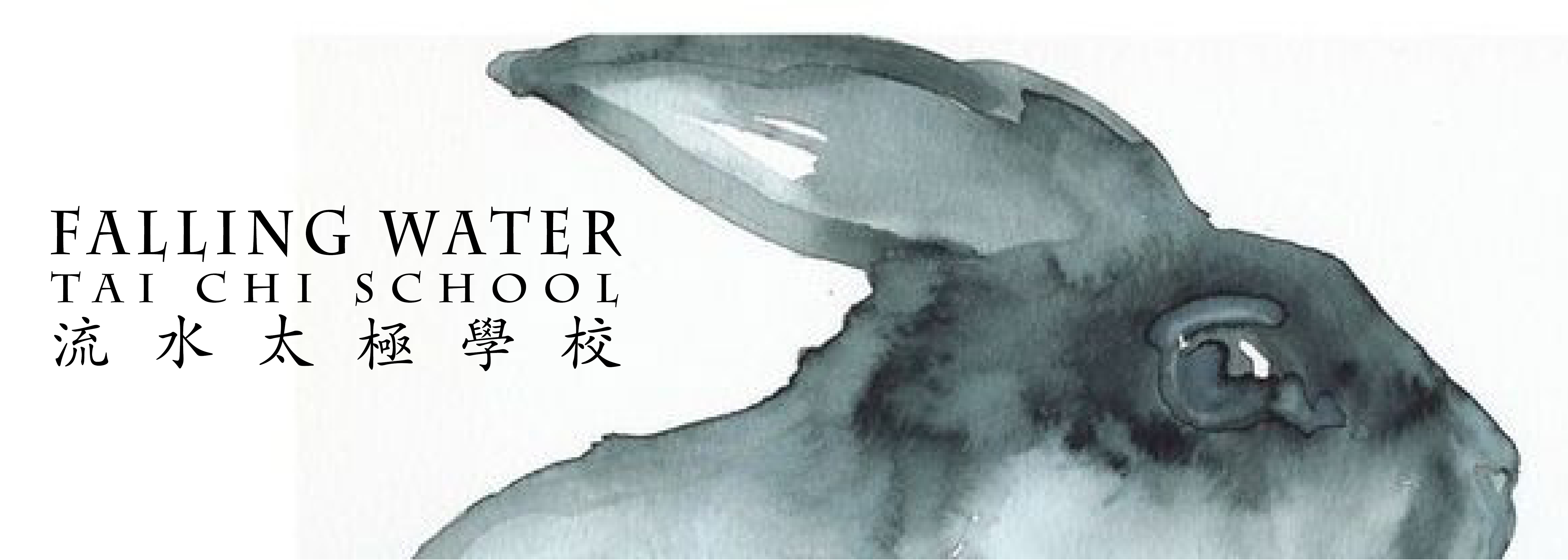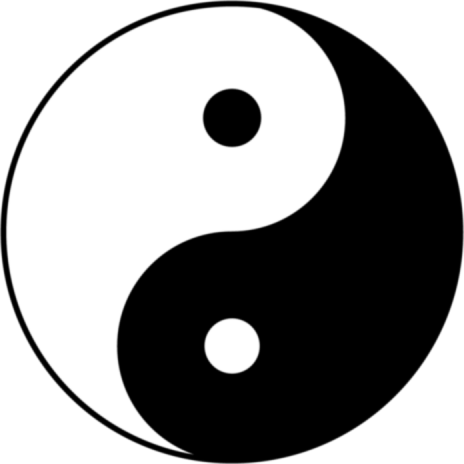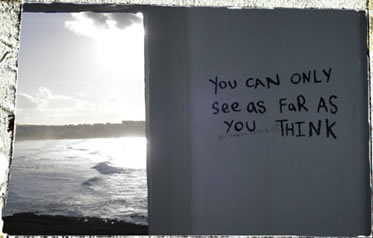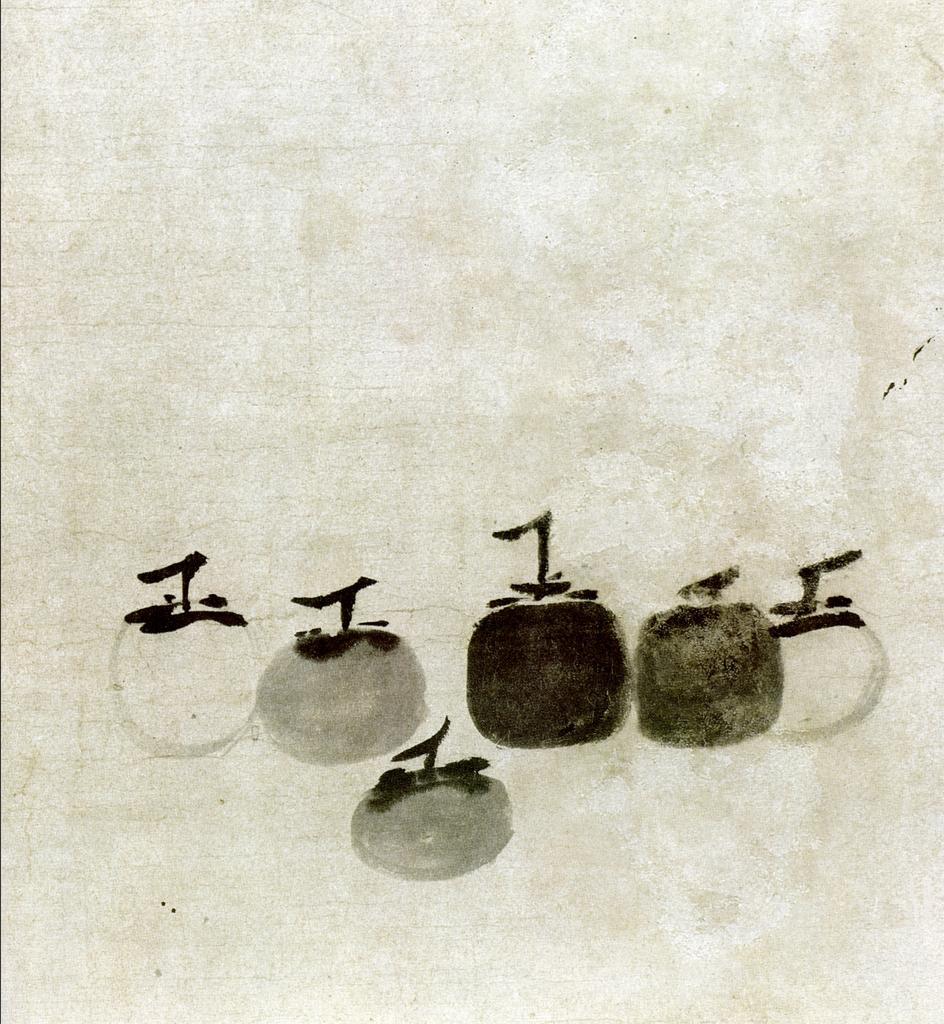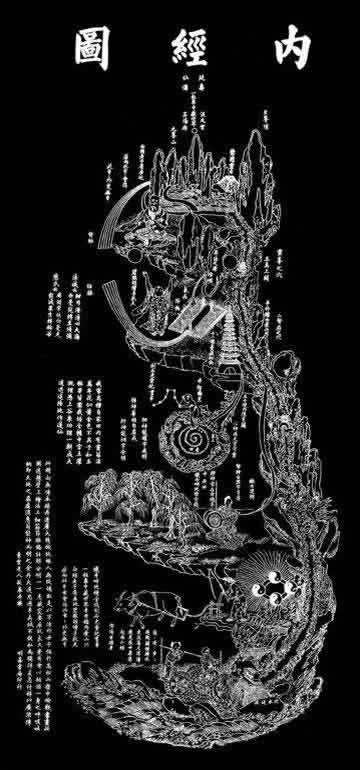Taichi theory is a curious thing. Despite its ancient relevance, universal significance and widespread popularity it continues to remain a vague notion in the mindset of the West. Deeply embedded in a contextual hinterland of crosscultural supposition and historic misunderstanding, it does not readily reveal itself to the casual glance. First of all, there is no correlate concept in the Western paradigm with which to identify it. Secondly, the literal translations of "supreme ultimate," "absolute polarity" and "great pivot" do very little to clear up any confusion and more often than not just end up further obscuring the issue. So nobody really uses them besides the occasional sinologist and overzealous young translator. This is the first lesson in trying to understand taichi theory:
mystery is fundamental.
While thirdly, as if these murky semantics weren't already disorienting enough, the linguistic gap between Chinese and English has resulted in at least three different spellings of the Chinese word "太極" currently in use across the romanized multiverse. According to an ever growing international majority, the official spelling more in tune with the proper pronunciation should actually be "taiji." The "taichi" spelling we are using here is really more a cultural link to the martial art lineages that came to America in the mid-1900s and set the colloquial precedent before the much more phonetically accurate Chinese transliteration system of pinyin had a chance to fully develop and be disseminated. So pretty much everywhere there are scholars of Chinese culture, Neoconfucian philosophy, Daoist spirituality and East Asian medicine who are writing in romanized languages, the standard spelling being used more and more is "taiji." But here in the commons, in honor of the older martial art lineages that first introduced the concept to the marketplace, we still use the original spelling of "taichi," and sometimes even "t'ai chi." Though in all cases the correct pronunciation is of course still "ty-jee." This is the second lesson in trying to understand taichi/taiji theory:
context is everything.
So now that we know we are on a slippery slope and looks are indeed deceiving, we are ready to start responsibly defining. On one hand, taichi theory is simply the guiding principles and organizational framework of taichi practice. Thus if you understand what taichi practice is, then you would also necessarily understand what taichi theory is. In a yinyang reality where every single thing has an equal and opposite, taichi theory is simply the yin to the yang of taichi practice. And like all things yin and yang, theory and practice are two integral halves of the same organic whole that can never truly be separated. Physical experience is guided by mental process just as much as mental process is guided by physical experience. However unlike other theories that also have practical applications, it is specifically and strictly a mutually reciprocal relationship between these two halves that distinguishes "taichi theory." Thus the third lesson:
mutual reciprocity is essential.
Which brings us to our fourth lesson and the illustrious other hand, where taichi theory is actually the sacred inner chamber of the ten-thousand things and the beating heart of the ancient Chinese worldview that sees all reality as yinyang reality and all relations as mutually reciprocal to all other relations. Though there are countless applications and just as many forms of taichi practice as there are clouds in the sky or opinions on the internet, taichi theory will always and ever be a singular thing. Whether we are talking about the various styles and lineage branches of Taichi Chuan itself, the utilization of taichi theory in other martial arts, or its application in other disciplines altogether such as medicine, spirituality, music, painting, design, strategy or simply the deliberate living of a well-balanced life, if one is tapping into the old-growth principles of balance, flow and natural harmony in holistic relations, then one is tapping into taichi theory. As Confucius once put it:
all people are united by theory
and differ only according to practice.
No surprise then that it was Confucius himself, perhaps the most beloved and respected sage in all of Chinese history, who first coined the term "taichi (太極)." According to the old story, it was towards the end of his life, after his exhasutive study of traditional culture and many hard decades spent traveling across a war-torn China advocating for greater social harmony, that he finally honed in on the concept. At one point in his travels through the nation's capital in Luoyang he had supposedly been handed an ancient book of cryptic symbols and divination codes called the Zhou Yi (Changes of Zhou) by the old archivist there, who just happened to be the other most revered sage of China known as Laozi (Old Master). But Confucius was a busy man and wasn't able to give it the mind it required at the time. It wasn't until the retirement phase of his life that he finally found himself out of the fray of politics and family tragedy enough to sink his proverbial teeth into that old text that Master Lao had given him long before. At which point he was famously quoted as saying: "Ah if only I had another 50 years to live, I would devote it entirely to the study of the Yi!" This reveals another very important characteristic of taichi theory:
true knowledge is experiential
To understand how Confucius came to consider this mysterious old text to be such a vital and important part of traditional culture and worth the extra effort it took to make sense of, might require a bit more context. You see, the Zhou Yi was merely the most recent Zhou Dynasty version of this ancient divination manual that had been used and refined by the sages and rulers of old China for guidance and direction ever since the very beginning of its civilization. It was essentially a tool for communicating with Heaven and thus ensuring alignment with the "heavenly mandate (tianming)," which was something that no ruler of China would ever possibly think of trying to rule without. Before the Zhou Yi there was a Shang Yi from the Shang Dynasty, and a Xia Yi from the Xia Dynasty preceding that. Even before this there were the core symbols, known as the Bagua, which is traditionally sourced all the way back to the very first mythic chieftain who united the tribes of the Yellow River Valley named Fuxi, who supposedly "discovered" the curious pattern on the back of a giant tortoise that he encountered coming out of the river one fateful day, revealing yet another key component of taichi theory:
nature is the original source.
So by the time Confucius got a hold of these "Changes" around 500 BCE they were already around 2500 years old. Of course these earlier versions of the Yi have mostly been lost to time and only fragments of references remain. But thanks primarily to Confucius and his progeny, the Zhou Yi and the ancient tradition of divination that it so beautifully preserves is still fully intact. With the addition of some fairly extensive Confucian commentaries it took the new name of "Yi Jing (Classic of Changes)" and became the centerpiece of the Five Classics of the Confucian educational system. Over the many centuries that have passed since then, the other four classics have somewhat faded into the background of history, but amazingly the Yi Jing is still commonly found and used around the world today as an indispensable dispensary of wisdom and counsel, proving still another of the basic tenets of taichi theory:
the only thing that does not change is change itself.
This brings us, finally, to the birth of the word "taichi" and what it meant in the mind that first conceived it. It first appears deep in the middle of Confucius's vast commentary on the Yi known as the "Ten Wings" where he attempts to explain the fundamental pattern of how the Yi works. He envisioned it as a singular point of transformation deep at the core of all phenomena and creation that is constantly polarizing, countering itself and compounding to generate the rich diversity of the world while at the same time also maintaining its balance and harmony. He theorized that by understanding better the process of how natural change occurs and develops, one would then be able to navigate more smoothly through the many fortunes and misfortunes of the world to more easily accomplish one's goals in life (aka one's destiny). Here is how he puts it in the "Sixth Wing" of his commentary:
There is an absolute polarity (taichi) in change
which generates two qualities (liangyi),
four expressions (sixiang)
and
eight potentialities (bagua),
which then determine fortune and misfortune
and thus generate the great work of one's life.
Here now "taichi theory" is fully defined as the inherent mechanism within natural change that engenders the reciprocal dynamic of yin yang reality. And what's more, in following this yin yang reality through a threefold process of compounding complexity, there comes a kind of self-knowledge and surety about one's direction in life. You see in the old Chinese worldview, life is destiny and destiny is life. They are not separate concepts. One's existence is not a random thing that happens incidentally and is either taken advantage of or not. Each person and life is thought to play a distinct role in the process of creation that is mutually dependent on the rest of creation. Fulfilling one's destiny means living one's life to the fullest, for both oneself and all of one's relations. By this definition the practice of taichi then, whether as Taichi Chuan or any other discipline seeking to tap into the natural grace of balance and flow, is simply the expression of taichi theory, or in other words:
fulfilling one's destiny through alignment and transformation.
Thus to learn more about taichi theory is to study Daoism, Confucianism, East Asian Medicine or any of the traditional cultural arts of the Far East (such as the internal marital arts, fengshui, calligraphy, teaism, etc.). No matter the path, the process will necessarily involve three indispensable components: learning directly from an accomplished pracitioner, committing to a long process of dedicated practice and reading and re-reading certain classical texts. Knowledgable teachers are hard to find, correct practice is difficult to accomplish and the old books are not always so easy to comprehend. But if one sets one's heart upon the way with a requisite amount of patience, dedication and wonder, there are very few who don't arrive at understanding. This leaves us with our final lesson for today in this very preliminary foray into defining taichi theory:
the journey is the destination.
May all relations thrive in the bounty of the old balance. Opportunity is alive!
